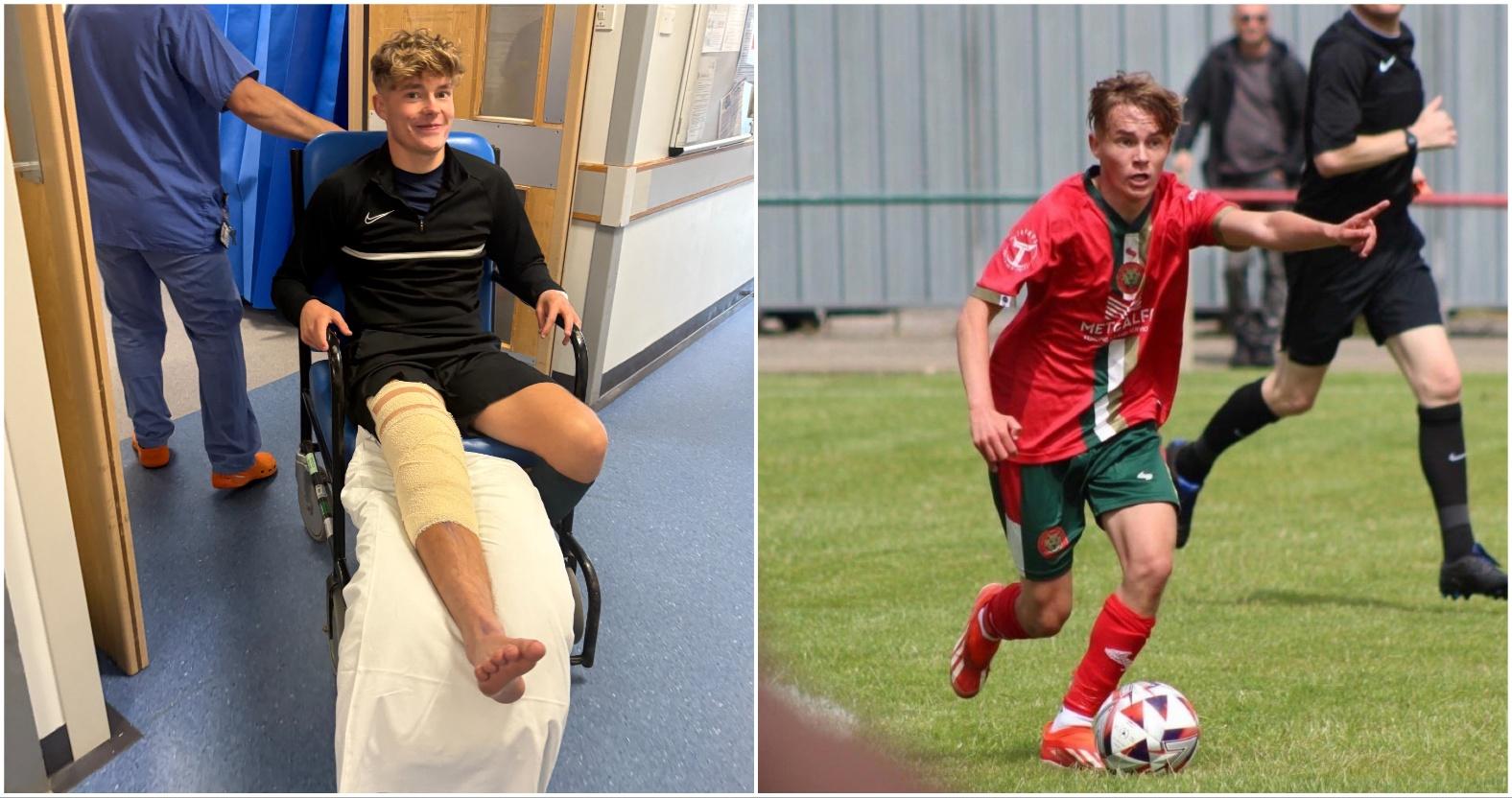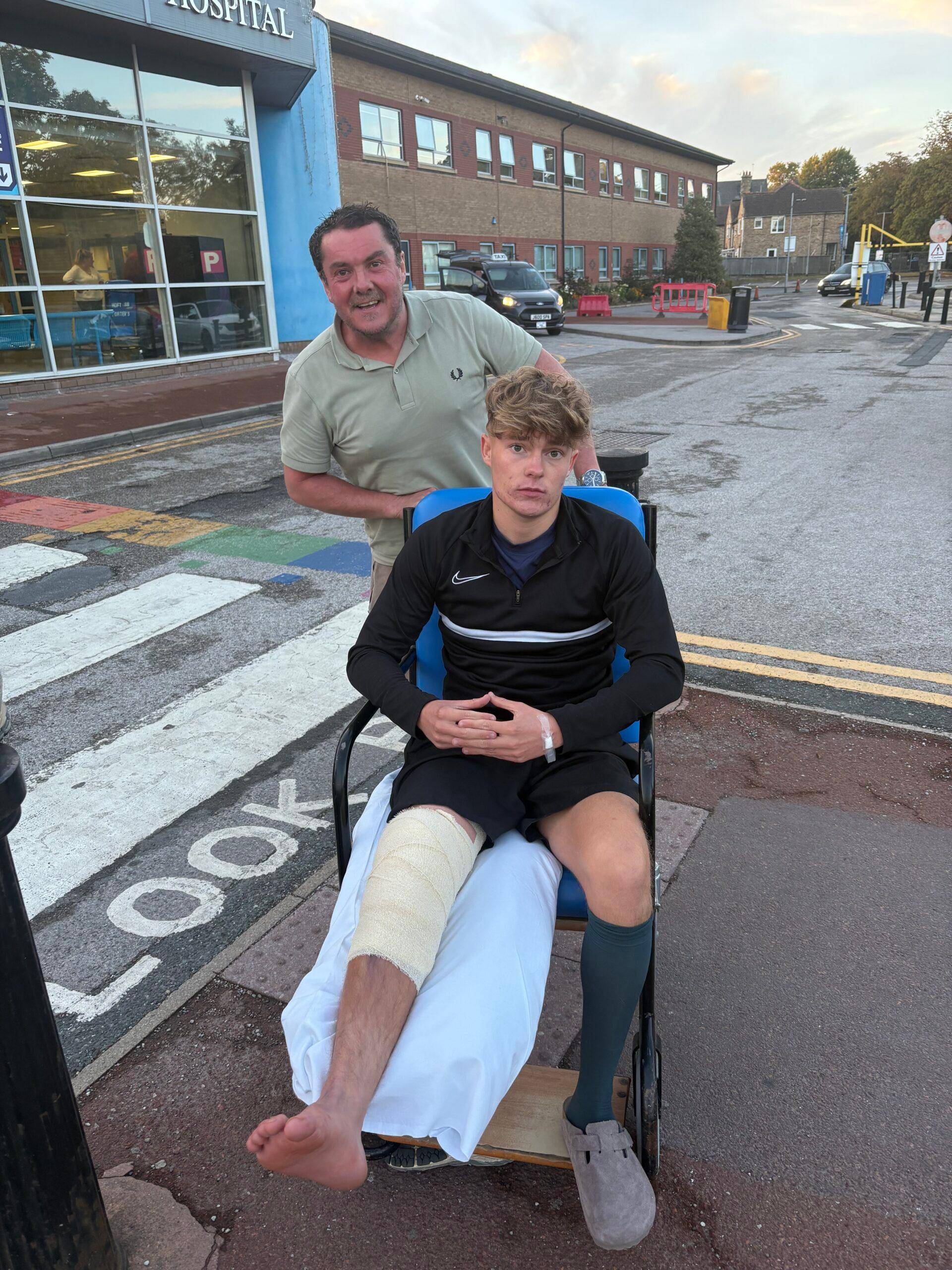Subscribe to trusted local news
In a time of both misinformation and too much information, quality journalism is more crucial than ever. By subscribing, you can help us get the story right.
- Subscription costs less than £1 a week with an annual plan.
Already a subscriber? Log in here.
27
Sept
The reality of ACL recovery as a semi-professional footballer in Harrogate

As a footballer, tearing your anterior cruciate ligament (ACL) is the grim reaper of injuries.
It’s the injury that players fear the most and the one that ends most careers.
For Harrogate Railway midfielder, Harry Bandeira, 20, a tackle in a reserve game has seen him sidelined for a lengthy period of time after rupturing his ACL.
In the cases of Theo Walcott and Michael Owen, ACL tears significantly impacted their ability to play the game. Other players like Roy Keane or Virgil van Dijk, are luckier and managed to return to a high level after injury.
But these were not achieved without intense physiotherapy and rehabilitation programmes, funded by incredibly wealthy football clubs.
So, how does a player like Bandeira cope with an ACL injury when his club does not have near-unlimited funds?
'I knew it was bad straight away'
Bandeira is a semi-professional footballer for Harrogate Railway. At the end of March, he ruptured his ACL playing for the reserve team.
The ACL is located inside the knee joint and is crucial for a player’s agility and acceleration. Many players who have suffered the injury find themselves losing pace and agility afterwards. For young players, this can be devastating.
An attacking midfielder, Bandeira was tackled from behind and got his leg stuck in the ground. He said his body fell, but his leg got stuck and jolted.
He told the Stray Ferret:
It was one of the worst pains I’ve had. I felt a snap, and I knew it was bad straight away. Railway were brilliant. They iced it straight away. After the initial pain, it didn’t hurt as much, but I started to feel really sick.
Stupidly, I didn’t go to the hospital straight away. I just thought, ‘it’ll be fine’. I work as a kids' football coach, so a few days later I went to pass the ball and just collapsed. I knew I needed to go to the hospital.

A lengthy wait
A professional footballer is usually scanned and has his results back within a few days of an injury. When Giovanni Leoni tore his ACL for Liverpool on Tuesday (September 23), the results were confirmed two days later on September 25. It is expected that a professional will undergo surgery within a few weeks.
But for Bandeira, it was no different to the rest of us.
After going to accident and emergency and receiving an MRI scan, the 20-year-old had to wait two weeks to get his results, and then three months for surgery.
In the meantime, he did prehabilitation — a process taken prior to surgery — to strengthen the muscles and build mobility in his leg.
On August 24, he underwent successful surgery and began his rehabilitation phase. For the month after the operation, he was limited to rehab at home.

Harry Bandeira's scars following successful knee surgery.
Rehabilitation
Bandeira said his rehab has consisted mostly of band work and mobility exercises so far, and that the main focus is leg extension.
Because a graft was taken from his hamstring, he has had to strengthen that, too.
He has been visiting Liam Chapman, the physiotherapist associated with Harrogate Railway, once a week, as well as attending hospital sessions once a week.
Bandeira said the difference between professional and semi-professional rehabilitation was vast. He said:
It’s a lot different. Mine is much more home-based. I can’t drive anywhere, so I can’t access the gym all the time or go for a swim like the professionals can.
Even with the physios, the pros will be in every day, whereas I’m only in once a week. It’s just that regular access to the gyms, to diet plans, and to hydrotherapy that you don’t really get at our level.
Although Harrogate Railway do not have the funding to provide rehabilitation facilities, Bandeira said he has been more than happy with the effort they have made for him, especially with emotional support.

The footballer's dressings are now off, he said.
'The mental side is the hardest'
A month on from surgery, the 20-year-old can just about walk with the aid of crutches.
As a junior football coach, his job requires him to be mobile — which means he is unable to work for the foreseeable future.
While he has struggled to come to terms with this, Bandeira said that his bosses, Danny Spence and Mike Johnson, have been brilliant with him, telling him he doesn’t need to worry about work.
The young midfielder said that recovery hasn’t come without its mental adversities, though:
The mental side has been the hardest – I’m so out of routine. The pain is manageable through the day, but I’ve not been sleeping well since surgery; every turn seems to wake me up. That just makes everything more draining.
Not being around your mates at football is hard, too. Railway are absolutely flying at the moment, so watching them doing so well when you’re not there to help is difficult. The club is still making me feel part of the team, though, inviting me down to everything. Their emotional support has been unbelievable.

Harry Bandeira with his dad, Graeme, after surgery.
Coming back stronger
For a professional footballer, recovery from an ACL injury will usually take between six months and a year. For Bandeira, it will be significantly longer.
He told the Stray Ferret that he hopes to be back by June next year, but that it realistically might not be until December. That would be a total of 21 months on the sidelines.
But why does he aim for June, even though he knows it might be unrealistic? He said:
In my head, it gives me something to push towards, and something to keep motivated by. I have a tracker that I put my recovery progress on, so that I can look back and see just how far I’ve come if I’m ever feeling like I’m not getting anywhere.
It’s been really hard but my family have supported me massively through it. It’s important to stay happy and not go down the negative road. You just have to tell yourself that it will get better.
An ACL injury can be devastating for young footballers.
At 20 years old, Bandeira admitted that while he does have his doubts, he’s confident that with hard work and persistent strength training, he can return to his pre-injury level.
0